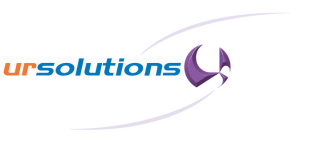- Privacy Policy
- Our Service Commitment
- Red Hat Delivers Accessible, Open Source Generative AI Innovation with Red Hat Enterprise Linux AI
- Is Red Hat OpenShift Container Platform Virtualization the Best Alternative to VMware Amid Rising Costs?
- Top 10 Stories About Compute Engines, Linux of 2024 (So Far) - ITPro Today
UR Solutions News
Open-source News
Pytorch's Shift from Meta to Linux Foundation: For Good or Bad? - Analytics Insight
Pytorch's Shift from Meta to Linux Foundation: For Good or Bad? Analytics Insight
Intel Becomes First Major Corporate Backer To Krita Open-Source Digital Painting Program
Intel has become the first corporate "gold" patron to the Krita Foundation for their development fund to advance this open-source digital painting program...
More Meteor Lake Enablement Readied For Intel Graphics Driver With Linux 6.1
Along with the last drm-intel-gt-next pull for Linux 6.1, a final drm-intel-next pull request of new feature code was submitted to DRM-Next ahead of the upcoming Linux 6.1 merge window...
More AMD Ryzen Laptops See Suspend-To-Idle Fix
Earlier this month I wrote about AMD working on s2idle fixes for some AMD Ryzen 6000 series "Rembrandt" laptops. At the time it was just for select ASUS laptops known to have a bug in the firmware resulting in suspend-to-idle issues while now additional models not only from ASUS but also Lenovo have been uncovered...
How to install Parrot OS 5 Home Edition - AddictiveTips
How to install Parrot OS 5 Home Edition AddictiveTips
Loongson Preparing Linux For LoongArch Laptops
Chinese hardware vendor Loongson Technology continues working on the LoongArch code for the Linux kernel for their in-house CPU ISA derived from MIPS64. Now that the initial code has been mainlined since 5.19 and some of the necessary other critical bits of code are getting squared away, recently they have been working on other missing functionality for supporting their initial LoongArch-based Loongson 3A5000 series SoCs...
Rust Porting Begins For Intel's "e1000" Linux Network Driver
Adding to the growing examples and early drivers being worked on for the Linux kernel to showcase the possibilities of using the Rust programming language within the kernel, an early port of Intel's e1000 wired networking driver has started...
Shouldn't Linux Foundation be Officially Present in India? - Analytics India Magazine
Shouldn't Linux Foundation be Officially Present in India? Analytics India Magazine
